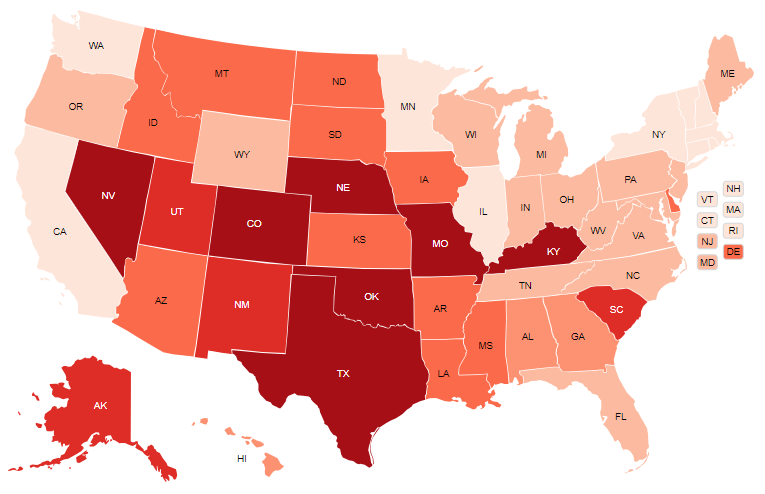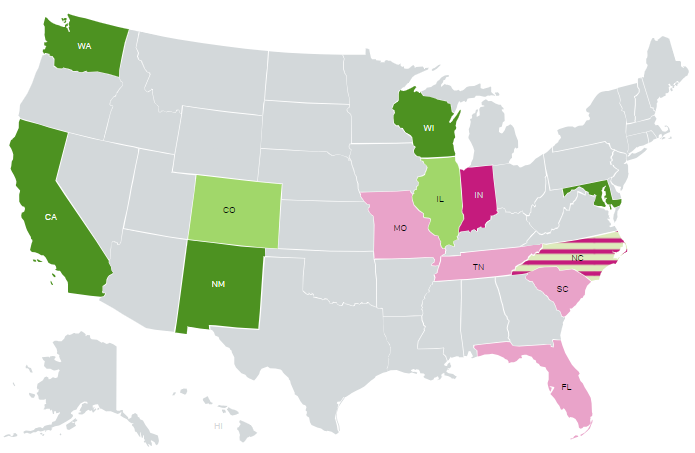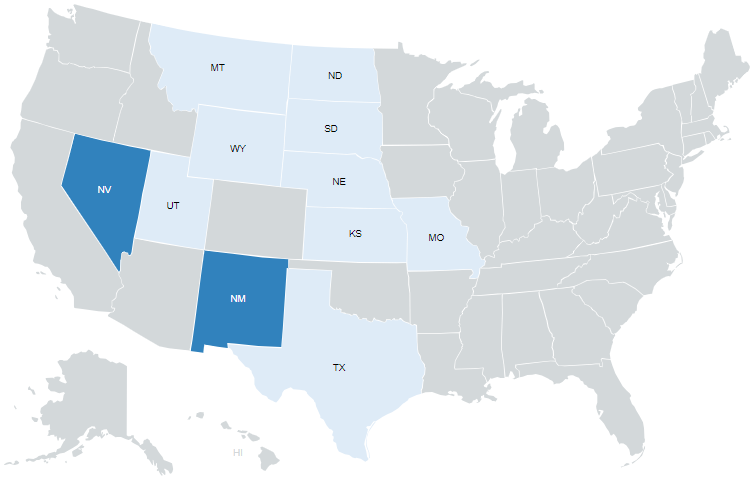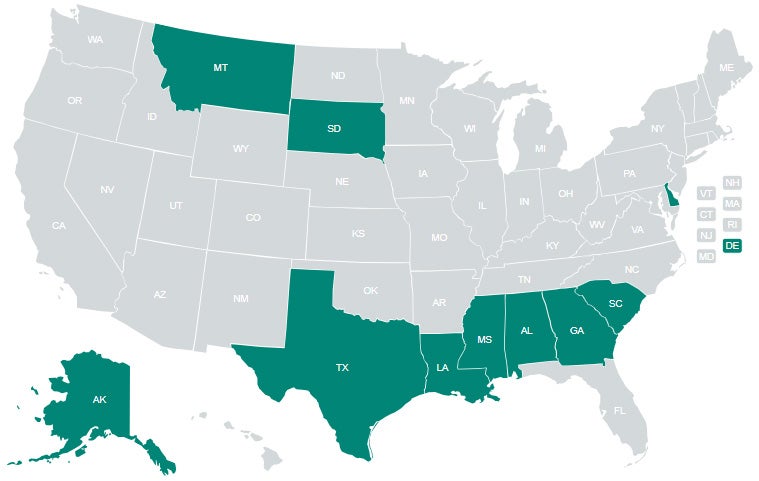May 14, 2024
Wetlands and Streams Most in Danger After the U.S. Supreme Court’s Sackett v. EPA Ruling

← Wetlands and streams most at risk of harmful development and pollution

→
Wetlands and streams with some protections from harmful development and pollution
Scale based on current state water protections, state legislative limits to clean water safeguards, and federal data on quantity of streams and wetlands in states
← Wetlands and streams most at risk of harmful development and pollution
Wetlands and streams with some protections from harmful development and pollution →
Colorado
Kentucky
Missouri
Nebraska
Nevada
Oklahoma
Texas
Alaska
New Mexico
South Carolina
Utah
Arkansas
Arizona
Delaware
Iowa
Idaho
Kansas
Louisiana
Mississippi
Montana
North Dakota
South Dakota
Alabama
Georgia
Hawaiʻi
Florida
Indiana
Maryland
Maine
Michigan
North Carolina
New Jersey
Ohio
Oregon
Pennsylvania
Tennessee
Virginia
Wisconsin
West Virginia
Wyoming
California
Connecticut
Illinois
Massachusetts
Minnesota
New Hampshire
New York
Rhode Island
Vermont
Washington
Scale based on current state water protections, state legislative limits to clean water safeguards, and federal data on quantity of streams and wetlands in states
The United States has at least 290 million acres of wetlands — about twice the area of Texas — and at least 200 million miles of life-giving streams which do not flow year-round. As a result of the U.S. Supreme Court’s ruling in Sackett v. EPA, millions of acres of wetlands have now lost protections, as well as a staggering and yet-to-be-determined number of streams. The downstream impacts of this staggering loss of protections are incalculable.
Waterways are vast and interconnected — even states with protective laws can experience the impacts of water pollution and wetlands loss.
“The Sackett decision undoes a half-century of progress generated by the Clean Water Act,” explained Sam Sankar, senior vice president of programs at Earthjustice.
“The Court’s decision to deregulate wetlands will hurt everyone living in the United States. Earthjustice will continue to fight to protect our waters to ensure the health of communities and ecosystems for decades to come.”
Where states are strengthening and weakening protections for wetlands and streams
Good legislation: California, Maryland, New Mexico, Washington, Wisconsin
Creating wetlands programs: Colorado, Illinois
Executive action to protect wetlands: North Carolina
Passed rollbacks in 2023–2024: Indiana, North Carolina
Introduced rollbacks that failed to pass: Florida, Missouri, Tennessee, South Carolina

States with a significant number of streams vulnerable to being targeted
In these states, over 75% of their streams are classified as ephemeral or intermittent streams by U.S.G.S. After Sackett, ephemeral and intermittent streams are likely more vulnerable to being targeted for development and pollution without strong state protections.
Over 75% of streams classified as ephemeral or intermittent: Kansas, Missouri, Montana, North Dakota, Nebraska, South Dakota, Texas, Utah, Wyoming
Over 90% of streams classified as ephemeral or intermittent: New Mexico, Nevada

States with the most wetlands and highest proportion of wetlands to land, but least protective laws
Includes states with more than 3 million acres of wetlands and/or more than 4% of the state are wetlands
Alabama, Alaska, Delaware, Georgia, Louisiana, Mississippi, Montana, South Carolina, South Dakota, Texas

Media Inquiries: Erin Fitzgerald, Senior Media Relations Strategist, Earthjustice, efitzgerald@earthjustice.org
Established in 1989, Earthjustice's Policy & Legislation team works with champions in Congress to craft legislation that supports and extends our legal gains.